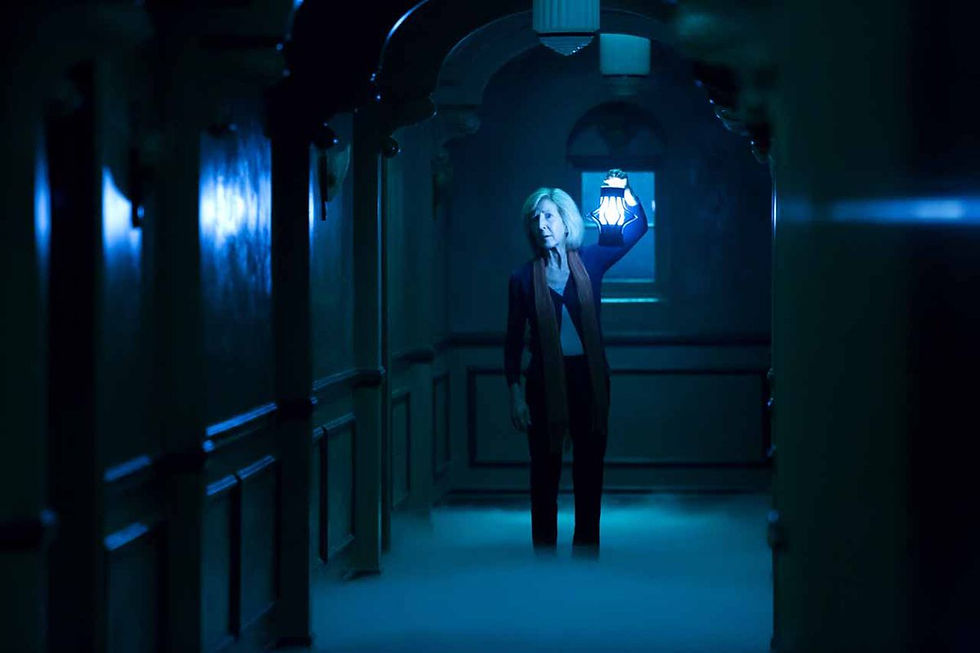Building a Pepper's Ghost- making the most of your theatre degree
- Grace Davidson-Lynch

- Mar 2, 2020
- 4 min read
At the end of 2019, after four years of study, I finally finished my creative arts degree with a thesis in horror theatre. It was a long and arduous journey, and I finally had something to show for it. But in the weeks after finishing, I had too much free time on my hands and the startling awareness that I needed to do something about it. I realised something I think all creative people realise once the dust settles and the comforting grasp of tertiary education is released.
What now?
I knew the question was coming, but the sudden lack of something to do brought it on quickly. Finishing my thesis was like breaking up with it. All I wanted to do was talk about it, look at it, and get wound up in the subject matter all over again. Knowing I wasn’t over it yet, and in an attempt to fill the void in my days where horror theatre used to go, I devised a plan to stave off my existential crisis and put my expertise to good use.
I built a Pepper’s Ghost for my sister’s Halloween party.

Pepper’s Ghost is a trick of the light that dates back to the 16th century, but was popularised in the mid-1800s by British scientists John Pepper and Henry Dircks. The Ghost uses planes of glass or mirrors to create reflections which are then transparently ‘projected’ onto a stage. As an actor performs in a chamber underneath or adjacent to a stage, their performance is reflected up into the auditorium, where it is seen by the audience to overlay the action on stage. It’s a trick that was difficult to achieve in Victorian theatres, but has gone on in recent centuries to be used to create apparitions in other settings. Updated versions of the technology are used in theme parks, particularly at Disneyland’s Haunted Mansion and Tower of Terror, and it was this trick that created the infamous ‘hologram’ Tupac Shakur who amazed audiences at Coachella in 2012.
The diagrams I'd seen looked simple enough. The first step was to figure out what ghostly projection I would use. All you need to create a Pepper’s Ghost is an image or video that has a black background. I looked online and found the perfect video- three skeletons grooving to the tune of ABBA’s Dancing Queen. It was inspired; I would decorate my tiny theatre to look like a haunted discothèque.
First, I built a box with two sections- an ‘auditorium’ space on top, and a chamber below to house a phone. The top section needed a hole cut out to allow the images on the screen to reflect on the angled glass above. The boxes were made of cardboard and I got the glass panels by dismantling two $3 photo frames. I decorated the inside with a disco ball, a tiny leather sofa, and a dancefloor. I added lights, a blackout curtain to section off the ‘phone chamber’, and finally created a second, slightly larger box to house the whole scene.

And so, I presented my masterpiece as a spooky gift at my sister’s party. I was sad to part with my creation, but it felt like a fitting end. Was this to be my final sorry attempt to get back with horror theatre? This subject matter can be disillusioning at times. It can be hard to understand why I would be interested in something so obscure and grotesque. When it seems that no one cares about this kind of theatre, when I would struggle to find plays to read or academic opinions that didn’t dismiss it all as exploitative trash, it’s hard to hold on to what makes it so valuable to theatre and audiences.
I slid my phone into the bottom chamber, turned off the kitchen lights and lit up my little theatre for the crowd that gathered around it. As the skeletons began their boogieing, the room full of drunk twenty-somethings began to freak out. They laughed and were in awe, took photos and needed to know how I did it. And my romance with this topic was rekindled.
That was all I needed to see- shock, awe, and joy. Horror theatre can be a strange world to inhabit because the extraordinary becomes very normal. Stage effects, gore, magic and mayhem had lost their novelty for me, but seeing fresh victims react to the tiny discoing skeletons reflected in the glass breathed new life into a timeless technology. Because ultimately, horror will always amaze and terrify us. No matter how desensitised or immune we think we are to theatre or horror, or to magic in general, there will always something that you can't anticipate.
And if you lose sight of it out there, sometimes you have to make it yourself.

References-
Burdekin, R 2015, 'Pepper's Ghost at the Opera', Theatre Notebook, vol. 69, no. 3, pp.152-164.
Tsukayama, H 2012, 'How the Tupac ‘hologram’ works', The Washington Post, April 18, viewed 28 February, www.washingtonpost.com/business/technology/how-the-tupac-hologram-works/2012/04/18/gIQA1ZVyQT_story.html
Illustration-
Potter, RA 2012, 'Tupac’s posthumous live tour', The New York Times, April 19, viewed 1 March, www.nytimes.com/2012/04/20/opinion/tupac-live-and-onstage.html
Photographs © Clio Davidson-Lynch and myself



Comments